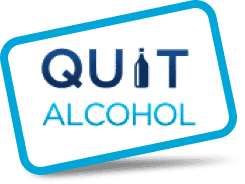Relapse is the biggest problem recovering alcoholics face. An overwhelming 90% of alcoholics will relapse within their first four years of sobriety. The stats are the same for tobacco users and heroin addicts. What this suggests is that addiction is the same disease, regardless of one’s drug of choice. It also suggests that relapse is the biggest issue for all recovering addicts.
Three main factors have been determined to cause alcoholic relapse: frustration, temptation, and societal pressure. Alcohol can be avoided, but unfortunately for us humans, these three factors are parts of life. We’re all going to get upset here and there. We’re all going to see beer commercials and go to a restaurant/bar at some point. We’re all going to be asked if we want a drink.
What if a gaming joystick supplied the answer to relapse? What if the joystick actually worked better than medicine?
The Dresden Study
Currently at the Dresden University of Technology in Germany, a team of scientists are conducting a study on relapse prevention. It began in April of 2015 and will end in March of 2018. The simplicity of the study is beautiful. The effectiveness of the study is incredible. Let’s pretend you’re either an alcoholic seeking help, or an already-recovering alcoholic. What will it take to become part of this study, and once you’re in, what will happen?
First, you must qualify. You must be between the ages of 18 and 65. You must have diagnosable alcohol dependence, and must have had it for three years or more. You must have been abstinent from alcohol for no less than three days, but for no more than three weeks. You must have recently finished a rehabilitation program. You must have no other substance addictions other than to alcohol. Oh, and you must speak German.
Hanna Lesch, journalist for Deutsche Welle, was granted access (note: page is in German) into the testing area by Dr. Miriam Sebold, one of the main researchers. Lesch didn’t find teams of people in lab coats, or a room full of equipment. Instead, she found a 1,000 square-foot room with two things: a computer and an MRI machine. Anyway, you meet all the qualifications and you’re in. What happens now? Let’s continue your study.
Start exploring addiction rehabs
- Free & confidential helpline
- Connect with an expert rehab advisor
- Understand and review treatment options
Joystick Therapy
The very first thing you do is get an MRI. This gives the researchers an overview of your brain before the study. There is a screen in the MRI, and it’s split down the middle. A picture of an alcoholic beverage is on one side, with a picture of a non-alcoholic beverage on the other. You have a traditional joystick in your hand, a button on top. Your task is to use the joystick to ‘push’ the alcoholic beverages away and ‘pull’ the non-alcoholic ones toward you, as fast as possible.
Officially, it’s called Zooming Joystick Therapy. Literally your screen would look like this
You would use the joystick to zoom out on the beer, zoom in on the soda, and then push the button to get to the next set of images.
The joystick therapy process is repeated every six months for three years. You will have undergone the pushing-away of alcoholic beverage photos six times. After the sixth session, a final MRI is taken. This allows the researchers to compare your brain from before the study with your current brain. Also, in between joystick sessions, researchers will phone you at home. They want to see how you are doing, if you have maintained sobriety, and whether or not the image-pushing has had any influence.
The science behind this seemingly simple form of therapy is actually both complex and ingenious. “Regions of the brain that are responsible for motivational processes, so automatic processes, have very strong neuronal responses to such alcoholic stimuli in patients suffering from alcoholism,” says Dr. Sebold in an audio clip linked here.
What she’s saying is so far, the brains of the alcoholics who are part of the current study respond heavily to the picture game. The brains of non-alcoholic people do not act this way. Dr. Sebold says, “Whereas with us, with healthy test subjects, that’s not the case. We don’t really differentiate between a glass of orange juice and a wine glass.”
Take what you will from this experiment in relapse prevention. Fact is it’s working. So far, relapses are down 10% among participants. It might not sound like much, but so far this experiment has done “…more than even the world’s best medicines can accomplish,” according to Lesch in the audio clip.
Why it’s Working
Alcoholism is not a choice. Sure, people have the free will to choose whether or not to drink at first, but for those who become addicted, the choice is gone. It requires much more than sheer willpower to overcome an alcohol addiction. Plus, with 90% of recovering addicts relapsing, it’s obvious the prevention methods need an upgrade. Medicines work to an extent, but less than 10%.
Alcoholism changes the brain so much that it learns to function with it, and can’t function properly without it. Alcoholism is “regulated by automatic processes,” says Dr. Sebold. “The majority of alcoholics would like to stop and live abstinent. They maybe lost their wife, their job, their health, and they do it anyway. It is not a disease of weak will.”
Since the joystick therapy trains you to automatically respond negatively to alcohol, it’s as the old saying goes… If you can’t beat ‘em, join ‘em. This experiment essentially sinks to the level of alcohol regarding what it does to the brain, and then attempts to reprogram… and it works. Sometimes a personal story helps put things into perspective.
Freddy
Among those the experimental therapy has been successful so far is a man named Freddy. He began drinking regularly back in 2004, after he and his wife got a divorce. Over the next twelve years, Freddy was drinking two liters of beer every day, plus a handful of shots. From then until now, that’s enough to fill over 6,800 standard bathtubs with beer. Plus that’s enough liquor to fill nearly two and a half bathtubs, assuming Freddy took three shots a day.
He tried quitting several times in those years.
“I’ve tried to take a break from it more than a few times, but it was two, three days at the most. Then I did some rehab, and then I did some more rehab. I was even in long-term rehab,” says Freddy in the Deutsche Welle audio clip, linked again here. He says he relapsed every single time. Last year, everything changed.
When he first hears about the experimental therapy, Freddy was skeptical. “It seemed like a gimmick. That was hogwash to me,” he said. However, after hearing that the experiment included MRI examinations, Freddy became interested. He suffered a terrible accident years ago, and was still feeling some symptoms. He figured a paid-for MRI was worth any shoddy experiment.
The joystick therapy has kept Freddy sober for the past sixteen months. He speaks about his real world experience being affected by the therapy: “Afterwards I was in the store and I saw the same picture of the bottle. I turned my face the other way and said no.” Sure, it doesn’t work for everyone, but nothing does, and so far this seems to be the best thing we’ve got to prevent alcoholic relapse.
Freddy is 64 years old at the time of this writing, and has recently landed a job! This is an admirable step for a man who avoids even talking about alcohol. “Ah, then I end up in those darker times from before, when I wasn’t even interested in cleaning my apartment, when I wasn’t even interested in taking care of myself,” says Freddy.
Seventeen months remain in the experiment, and Freddy has years to go before he hits that four-year mark, but so far he’s on the right track.
The Ultimate Goal
Dr. Sebold knows the power of addiction. “What it really comes down to is that their addiction [her patients’] is such a powerful illness that again and again you have these cases where the patients say, ‘I was dry for ten years and I treated myself to a beer because I figured I could treat myself to something, and then I relapsed right back into this very strong addiction.’ They’re drinking a bottle of vodka a day.”
The doctor also knows the power of the experiment she’s involved in. A quote from the publication of the study reads, “Investigations show that alcohol abusers have automatic tendencies toward alcohol. They have learned certain mechanisms over time, and they can unlearn them.”
Over time, participants pushed the alcoholic images away faster and faster. However, the rate of pulling in non-alcoholic images remained about the same. This is astounding, and shows a physiological change beyond that of just getting good at working a joystick. Journalist Hanna Lesch noted the potential of the experiment upon her visit.
Combined with the medicine that already exists, the results of this study could change the face of how we prevent alcoholic relapse.
The experiment causes “changes at the cognitive level, but also at the neural level,” says Lesch. “As soon as they find out exactly where and how this therapy affects the human brain, the discovery could help lead to new medicinal-based therapies.” The ultimate goal, really, is to create individualized therapies for patients that include some form of the joystick approach.
“You could use these processes to build on pharmacological treatments,” says Dr. Sebold.
We’ve Helped Thousands of Individuals Overcome Drug and Alcohol Addiction
In Conclusion
This is a clinical study, currently underway at Charite University in Berlin, Germany. Participants are volunteering, and joystick therapy is in its earliest stages. Much can happen from now until it actually makes an impact on relapse prevention. That being said, the experiment seems awfully promising. Sometimes the simplest solutions make for the most complex results.
Who would have thought that literally pushing alcohol away would reduce relapse? Beyond the implications for therapy and medicine, this joystick method could be used for any addiction. Imagine cigarettes and gum on either side of the screen, or even a heroin needle and an amusement park. In essence, you are training your brain to respond negatively (push away) one thing, and respond positively (pull in) another more healthy thing.
It’s been said that addicts replace one addiction with another upon quitting. For example, if an alcoholic stops drinking, he or she may start replacing the alcohol with marijuana. With joystick therapy, addicts can begin replacing their substances of choice with whatever they desire. Freddy already said he would do the same thing.
“I would buy the program for home, but then I would just put in my own pictures!” he says with a smile. “Christmas is celebrated this year without alcohol.” Not everyone will turn out like Freddy, but surely it can’t hurt to try.

